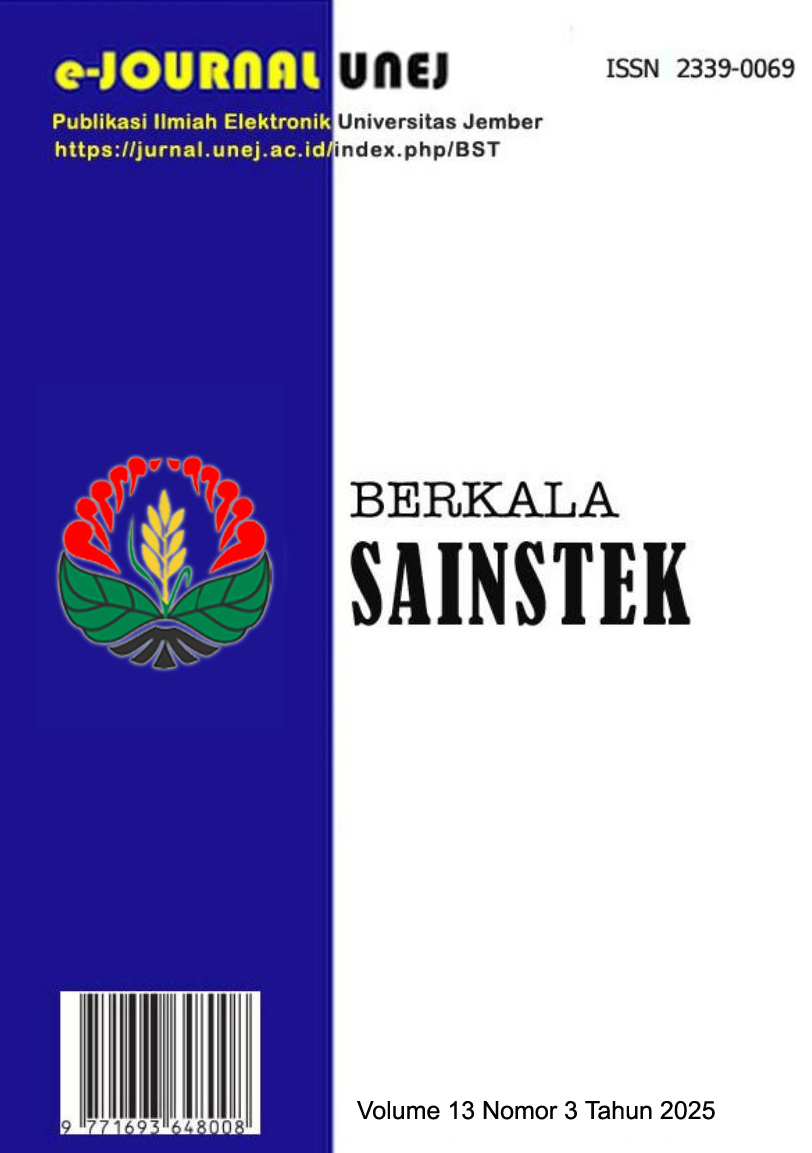Seismic Vulnerability Index Study of Lasem Fault Zone Using HVSR Method Based on Microtremor Data
DOI:
https://doi.org/10.19184/bst.v13i3.53714Keywords:
HVSR, Microtremor, Dominant frequency, Lasem Fault, Seismic vulnerability indexAbstract
The Lasem Fault Zone is one of the tectonically active areas in Central Java that has the potential to trigger damaging earthquakes. To identify seismic vulnerability in this area, a microzonation approach based on soil dynamic parameters is required to represent the local response to shaking. This study aims to analyze the distribution of dominant frequency (f0) and amplification factor (A0) values, as well as to calculate and map the seismic vulnerability index (Kg) in the Lasem Fault zone using the Horizontal to Vertical Spectral Ratio (HVSR) method based on microtremor data. Data were collected at 60 observation points spread across Pati and Rembang regencies. The results of data processing show that the dominant frequency (f0) value varies between 0.59 to 20.76 Hz, while amplification factor (A0) is in the range of 1.01 to 5.05. The distribution of dominant frequency (f0) and amplification factor (A0) values is strongly influenced by the surface geological conditions, where soft and thick sediments tend to produce low f0 and high amplification factor (A0). the seismic vulnerability index (Kg) values calculated from these parameters range from 0.076 to 10.322. The resulting zoning maps show that some areas have a high level of vulnerability to earthquake shaking, especially in areas with alluvial lithology and low-lying morphology.
Downloads
References
[1] PusGeN, Peta Sumber dan Bahaya Gempa Indonesia Tahun 2017. 2017.
[2] S. Geofisika, “Skenario peta guncangan (shakemap) gempa sesar lokal di jawa tengah,” 2021.
[3] Y. Nakamura, “Clear identification of fundamental idea of Nakamura’s technique and its applications,” Proc. 12th world Conf. …, p. Paper no. 2656, 2000.
[4] SESAME, “Guidelines for The Implementations of H/V Spectral Ratio Technique on Ambient Vibrations Measurements, Processing and Interpretation.,” p. 200, 2004.
[5] R. Fitrianingtyas, M. Firdaus Al Hakim, A. Wibowo, and dan Khafidh Nur Aziz, “Analisis Seismisitas Di Yogyakarta Berdasarkan Hasil Relokasi Hiposenter Menggunakan Metode Double-Difference Seismicity Analysis in Yogyakarta Based on Hypocenter Relocation Using Double-Difference Method,” J. Sains Dasar, vol. 12, no. 1, pp. 62–70, 2023.
[6] J. P. G. N. Rochman, M. A. Sadewa, and A. M. Putra, Earthquake Microzonation Using Microtremor Analysis and Horizontal to Vertical Spectral Ratio Method Study Case at Ampelgading and Tirtoyudo Sub-district, Malang, East Java. Atlantis Press International BV, 2023.
[7] Y. Nakamura, “Seismic Vulnerability Indices for Ground and Structures using Microtremor,” World Congr. Railw. Res., pp. 1–7, 1997.
[8] K. Kanai and T. Tanaka, “On Microtremors. VIII.” 1961.
[9] S. Firdaus and A. Setianto, “Interpretasi Struktur Geologi Berdasarkan Citra Landsat 8, Srtm Dan Anomali Medan Gravitasi Satelit Di Cekungan Jawa Timur Utara,” Pros. Semin. Nas. Geotik, pp. 193–204, 2018.
[10] J. Saita, M. L. P. Bautista, and Y. Nakamura, “13 th World Conference on Earthquake Engineering ON RELATIONSHIP BETWEEN THE ESTIMATED STRONG MOTION CHARACTERISTICS OF SURFACE LAYER AND THE EARTHQUAKE DAMAGE - CASE STUDY AT INTRAMUROS , METRO MANILA -,” Distribution, no. 905, pp. 1–7, 2004.
[11] Daryono, “INDEKS KERENTANAN SEISMIK BERDASARKAN MIKROTREMOR PADA SETIAP SATUAN BENTUKLAHAN DI ZONA GRABEN BANTUL DAERAH ISTIMEWA YOGYAKARTA,” 2011.
Downloads
Published
Issue
Section
License
Copyright (c) 2025 Nana Nawangsari, Yohana Noradika Maharani, Sorja Koesuma

This work is licensed under a Creative Commons Attribution-NonCommercial 4.0 International License.




